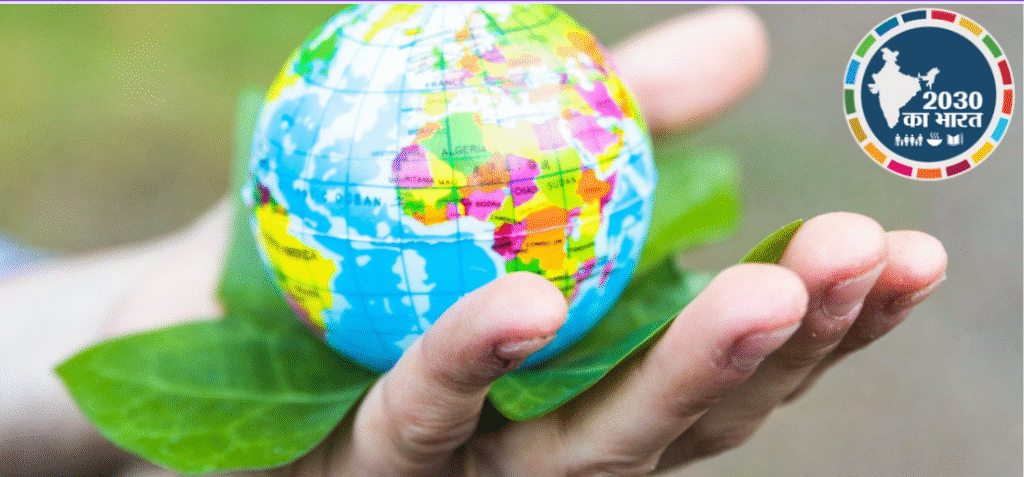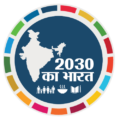The Sustainable Development Goals (SDGs), launched in 2015, are the world’s most ambitious global development framework. With just five years remaining until the 2030 deadline, the world stands at a defining moment in history. The year 2025 is no longer a midpoint; it is a warning sign. Global leaders, civil society, corporations, and citizens must act now to avoid irreversible setbacks in our shared mission for sustainable development.
The United Nations 2025 SDG Progress Report paints a sobering picture. Only 35 percent of targets are on track or showing moderate progress. Forty-seven percent are making insufficient progress, while 18 percent have actually regressed. This blog takes an in-depth look at why 2025 is the most critical year yet for the SDGs and what can still be done to save the 2030 Agenda.

The Sustainable Development Goals are a universal call to action. There are 17 goals and 169 associated targets, covering every aspect of sustainable human development. These include eliminating poverty and hunger, providing quality education and healthcare, ensuring gender equality, building resilient infrastructure, combating climate change, and fostering peace, justice, and strong institutions.
They are not just aspirations; they are the blueprint for building a sustainable future where no one is left behind. They represent equity, inclusion, justice, and opportunity — values that every global citizen can relate to.
Where the World Stands in 2025
According to the UN SDG Report of 2025:
- Only 35 percent of the 137 assessed targets are on track or moderately progressing.
- Nearly half of the targets show insufficient or stagnated advancement.
- A worrying 18 percent of goals have regressed below 2015 baseline levels.
The global situation is especially concerning for vulnerable groups, such as children, women, persons with disabilities, and the poor. Climate-related disasters, war, economic inequality, inflation, and hunger have all contributed to a slowdown, or even reversal, of gains made between 2015 and 2020.
What’s Working: The Areas Showing Progress
Social Protection Expansion:
For the first time, over half of the world’s population is covered by at least one form of social protection. From 42.8 percent in 2015, the coverage grew to 52.4 percent in 2023.
Education Access:
More children, especially girls, are enrolled in primary and secondary education globally. Literacy rates continue to improve, and the gender gap in access to education is slowly narrowing.
Healthcare and Mortality Rates:
Maternal mortality dropped from 228 to 197 deaths per 100,000 live births. Under-five mortality fell from 43 to 37 deaths per 1,000 live births. Access to vaccinations has increased in low-income countries.
Internet Connectivity:
Global internet usage jumped from 40 percent in 2015 to 68 percent in 2024. Mobile broadband is now accessible to 92 percent of the global population.
Electricity Access:
In 2023, 92 percent of the global population had access to electricity, compared to 87 percent in 2015. Countries in Sub-Saharan Africa are making faster progress, though challenges remain in rural areas.
Where the World Is Falling Behind
Poverty and Inequality:
More than 700 million people still live in extreme poverty. Income inequality within and between countries is widening. Refugee crises and conflict-driven displacement affect over 120 million people globally.
Hunger and Food Insecurity:
Over 2.3 billion people experience moderate to severe food insecurity. Small-scale farmers remain underpaid, despite contributing to global food production. Public spending on agriculture is less than two percent of national budgets.
Gender Equality:
Women continue to face barriers in political representation, land rights, digital access, and economic participation. Only 27 percent of parliamentary seats and 35 percent of local government positions are held by women.
Climate Change:
The year 2024 became the hottest year on record. Carbon dioxide levels are 151 percent higher than pre-industrial levels. Ocean acidification, species extinction, and natural disasters are all increasing in frequency and intensity.
Unemployment and Youth Disengagement:
The global unemployment rate reached a low of five percent, but youth unemployment remains three times higher than for adults. One in five young people is not in employment, education, or training.
Urban Infrastructure and Housing:
Slum populations are increasing. Access to affordable, adequate housing is a growing challenge, especially in rapidly urbanizing areas. Public transport and disaster resilience remain limited in most low-income cities.
2025 Is the Tipping Point
This year is no longer just a milestone — it is the year that determines whether humanity will succeed or fail in delivering on the SDGs.
- The 2030 deadline is rapidly approaching.
Only five years remain. Policies and programs initiated now will take time to show impact. We are already running out of time. - The cost of inaction is growing.
The longer the world delays progress on the SDGs, the greater the cost in human lives, environmental damage, and economic disruption. - The opportunity to realign is shrinking.
While global forums like the UN SDG Summit, G20, and COP30 are platforms for collective action, their outcomes must now turn into immediate implementation — not vague promises.
The Six Key Transitions for Transformative Impact
The UN has identified six critical areas that must be prioritized immediately:
1. Food Systems:
Reform agricultural production, distribution, and consumption to ensure nutrition, affordability, and sustainability.
2. Energy Access and Affordability:
Invest in renewables, phase out fossil fuels, and provide off-grid solar energy to the world’s poorest communities.
3. Digital Connectivity:
Provide internet access to the 2.6 billion people still offline. Build digital infrastructure and strengthen cybersecurity for all.
4. Quality Education:
Ensure every child completes secondary school with strong foundational and digital skills. Reform curricula for future-ready employment.
5. Jobs and Social Protection:
Formalize informal sectors, create green jobs, and extend social security coverage to all vulnerable populations.
6. Climate Change, Biodiversity, and Pollution Control:
Enforce emission reductions, protect marine and terrestrial ecosystems, and invest in climate adaptation for frontline communities.
Financing the SDGs: The Global Investment Gap
Achieving the SDGs requires an estimated additional investment of four trillion dollars annually. In 2024, developing countries spent a record 1.4 trillion dollars servicing external debt. Public and private finance must be redirected.
- Green bonds and SDG-linked loans must be scaled.
- International financial institutions must provide debt relief to low-income nations.
- Private investors must align capital with sustainable goals.
- Countries must increase domestic resource mobilization and curb illicit financial flows.
Without equitable financing solutions, most developing nations cannot afford to meet even the basic SDG targets.
Data: The Backbone of Development
The UN has stressed the importance of data in the 2025 progress report. Stronger data systems lead to better planning, policymaking, and accountability. But significant data gaps remain.
- In 2024, over 55 percent of countries lacked disaggregated data on disability, gender-based violence, and indigenous populations.
- The Medellín Framework for Action on Data is pushing for better global coordination, funding, and open access to data.
Data must be inclusive, accurate, and timely if we are to track real progress.
What Needs to Happen Now
Governments, businesses, international organizations, and communities must act immediately. The time for reports and resolutions is over. Now is the time for execution.
- National SDG strategies must be restructured with clear timelines.
- Youth must be given a stronger voice in policy decisions.
- Green jobs and climate-resilient infrastructure must be funded.
- Gender-sensitive budgeting must be applied.
- Civic space must be protected to ensure inclusive participation.
2025 is not just a checkpoint. It is the turning point. If we act with urgency, focus, and collective will, we can still meet many of the SDG targets by 2030. If we delay further, we risk a future that is more unequal, more unstable, and less hopeful for the next generation.
Let 2025 be remembered not as the year we gave up, but the year we turned the tide.
